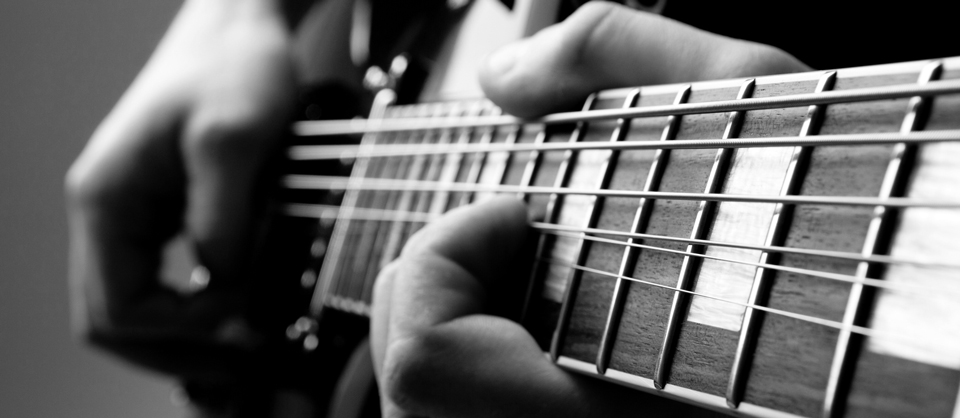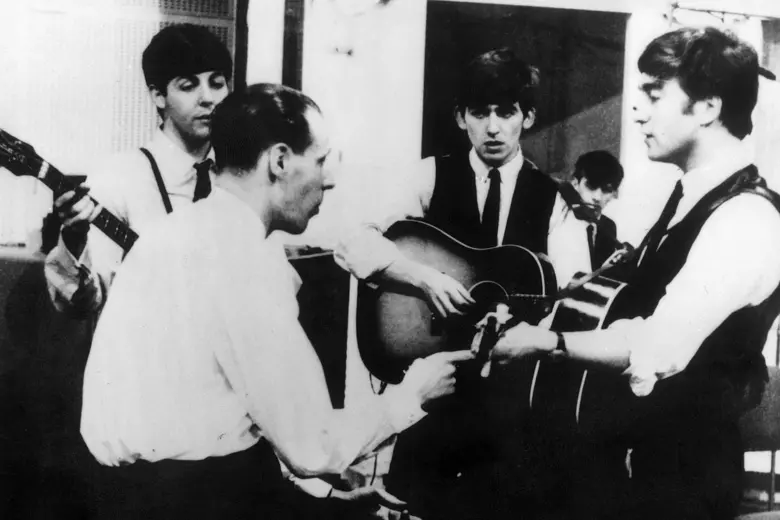
When dealing with improvisation with my students, I use a systematic method that begins with the basic concepts of improvisation and moves through the styles to the more advanced forms of jazz improvisation. I will give a brief overview of how to approach improvisation as a beginner in this blog, there are many ways and this is only one approach, but I have found some success with it.
A great way to start is to begin learning one or two patterns of the minor pentatonic and the major scale. Once you are comfortable with these, your journey into improvisation can begin!
Once my students are comfortable with these, I start taking them through a variety of tracks in different styles and keys, just focusing on developing improvisational prowess. I use the previously mentioned patterns such as the minor pentatonic for the minor key songs and the major scale shapes for the major key songs. Youtube has a large amount of backtracks in different contemporary styles that are great to jam along to, and they keep adding new tracks, so there are always fresh tracks available .
You can follow the links below to take a look at an example on Youtube:
E Minor Ballad – Click here
G Major Ballad – Click here
I encourage students to play along with ballads at first, as beginners don’t generally have strong technique around their scales yet, as they haven’t done any technical training with their scales at this point. The slow nature of ballads give students the chance to experiment with the scales and just focus on making basic melodies while they improvise.
The step directly after all of this is getting into adding the ‘blues’ note to the minor pentatonic and starting to move over into improvising with 12-bar blues and other blues-influenced music.
Taking the same two minor pentatonic patterns and learning them as a pentatonic-based blues scale opens up more opportunities and students can now begin their journey into blues improvisation. The blues scale can also be used in the minor and major backtracks, but I start with it at an introductory level with blues-based music. Once again, many blues backtracks can be found on Youtube, you just have to search for the keys you can play in and the door is open!
An example of an E Blues track on Youtube, once again starting with a slow track for the time being.
E Slow Blues backing track – Click here
Once comfortable with these, the next step is learning to move the patterns to different keys, just taking the same two patterns and moving them to different keys will open you up to playing so many different style tracks and in different keys. Also at this point I encourage daily time spent with a metronome on improving one’s technique with scales, by incorporating a variety of technical and sequencing exercises.
After this, the following step is to learn all the patterns of both the major scale, minor pentatonic and blues scale, across the whole guitar neck, and also moving to more up-tempo tracks, and varying the styles of the tracks that the students work with. Generally, when my students are on about a grade 3 or 4 level, I encourage them to know all these patterns across the neck as part of their studies.
Once this has been accomplished the next step is to start learning the scale patterns for the 7 different modes of the major scale. I would suggest starting with the Aeolian (Natural minor Scale) as this is very popular and can be played on any minor backtrack instead of the pentatonic. After that the Dorian, Mixolydian and Phrygian are more prominent, followed by the Lydian. Locrian is barely used, more for jazz improvisation and sometimes found in some forms of modern metal .
The modal backtracks can once again also be found on Youtube. Here’s a link to a D Dorian backtrack as an example: Click here. Once again, there are many modal backtracks available on Youtube, you simply need to type in the search bar and a variety of options should appear for you to jam with. Once comfortable with the modes, the next step is becoming aware of harmony.
If a student reaches this level then they should already have a good technique and be comfortable with all the scales discussed above. Once this happens you can start looking at becoming aware of chord tones (arpeggios) of the chords, either in or around the scale. I encourage students to learn their chord tones around the blues scale for the 12-bar blues chords, or focus on Diatonic Major and Minor progressions and learn the chord tones within the scale patterns. Once aware of the notes students can proceed to learn the tensions or other colour notes such as 9ths, 13ths, #11ths, etc. and all the notes of the scales. This is the first step into advanced improvisation and it’s good to start with blues and diatonic progressions. You can spend a long time on this and even choose to specialize at this point.
The final move of improvisation after this is to move into jazz and advanced blues forms. This study is endless, but you would move away from playing scales to keys and rather start looking at the chord/scale theory. Looking at playing separate scales for each chord and being aware of the harmony related to them. The Jazz approach is one that is a lifelong study and an endless discussion that I don’t really have the time to get into it in this blog. However an approach I use and that I use with my students, is the Jamey Aebersold approach, his material on Jazz education is great! You can take a look at ordering his material, he’s recorded dozens of volumes of jazz backtracks and charts etc.
After you have reached this point you will need to look into the melodic minor scale and its related modes to improvise over certain types of jazz chords, if you look above you can see the basic ones required for you to learn.
This concludes my overview of an approach to improvisation from a beginner to an advanced level. Once a student/musician reaches the later levels of improvisation, it’s really up to them and their taste to see where they want to take it, and what they want to specialize in. Some prefer to focus on avoiding the advanced jazz harmony approach, and instead focus on playing in a key and work on developing a blazing speedy technique and flashy technical displays (tapping, whammy bar dives, etc.) such as many Tech Rock guitarists.
Others prefer to stick to blues progressions and instead work on developing a more intense feel and tasteful form of playing as many blues and R&B guitarists do. Others get pulled into advanced harmony and trying to develop their jazz improvisation, like jazz and fusion guitarists. The journey is there and the choice is yours, what you end up choosing will be largely influenced by your taste in music. I will end this blog by leaving you with a famous quote that I think is quite fitting for the topic of improvisation, regardless of style.
“If you have something to say of any worth then people will listen to you.” –Oscar Peterson




Comments (0)